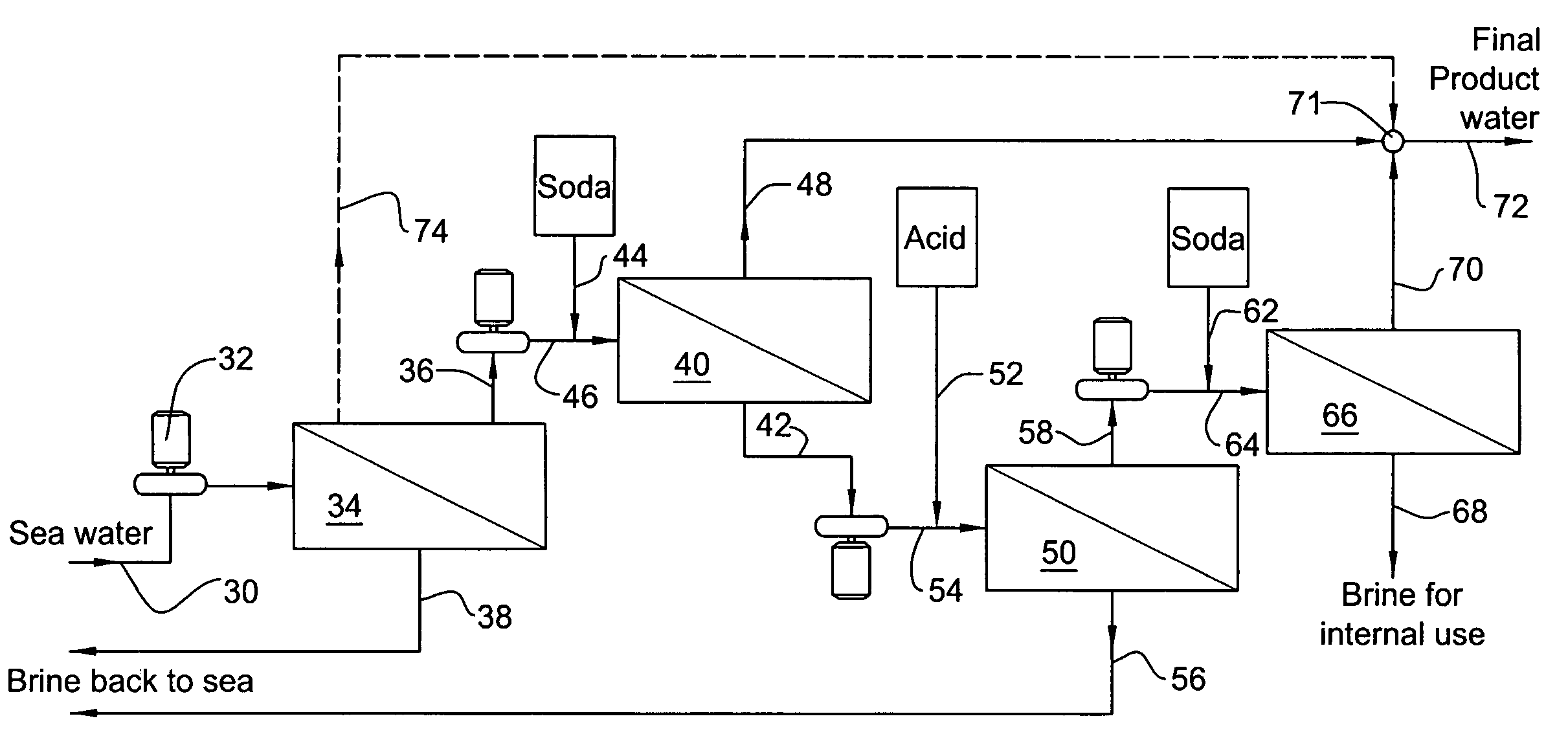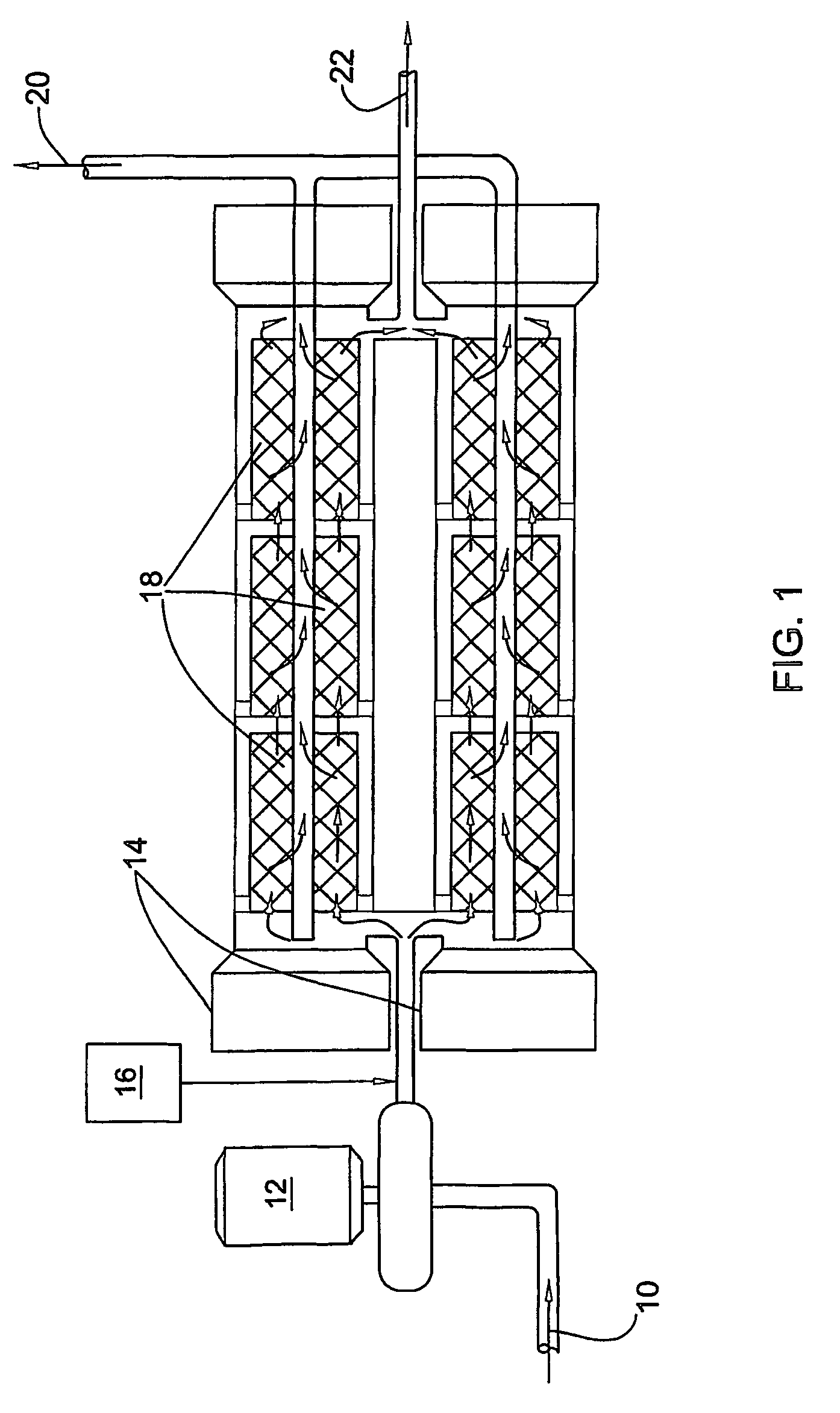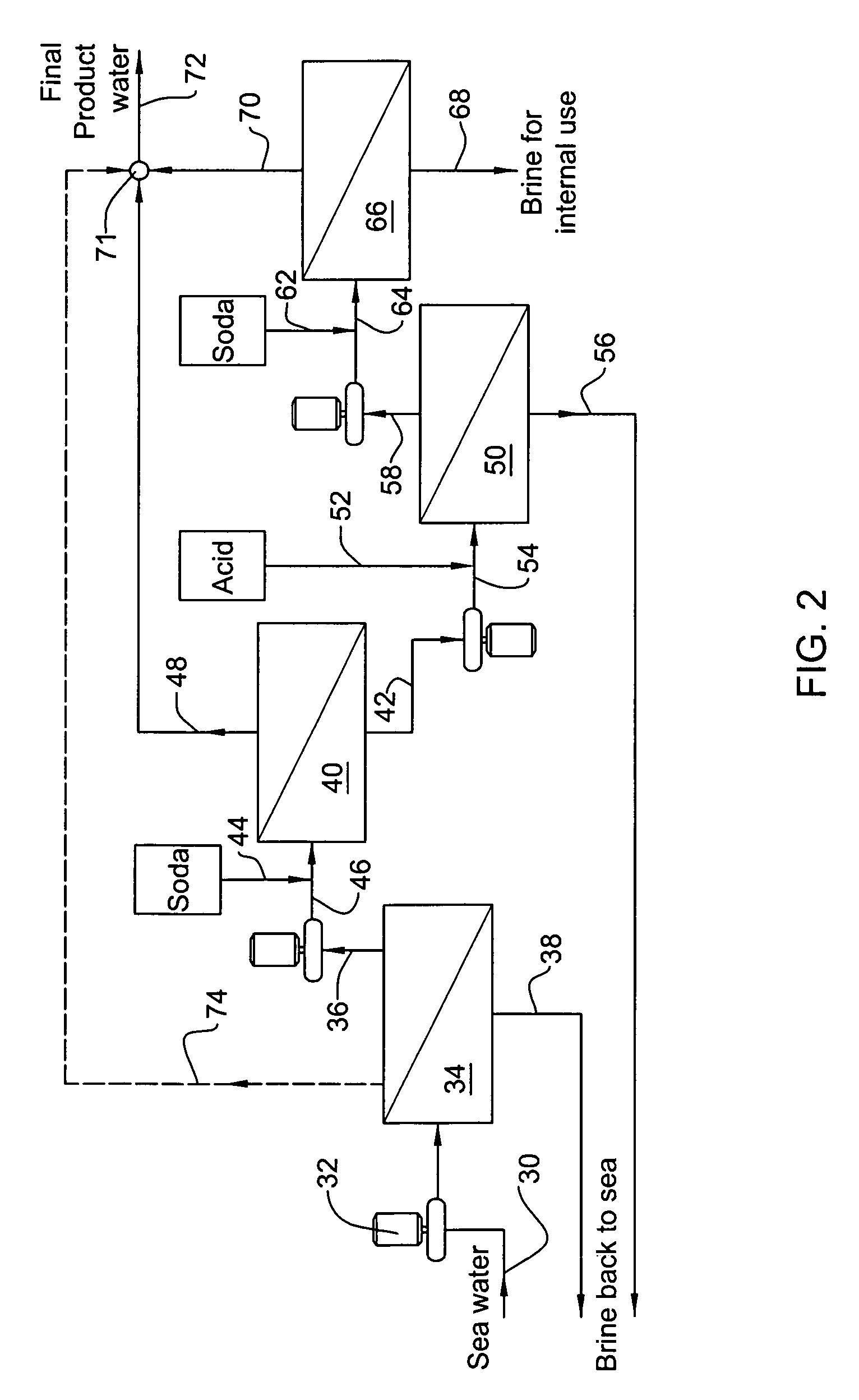Method of boron removal in presence of magnesium ions
a technology of magnesium salt and boron ion, which is applied in the direction of water/sewage multi-stage treatment, water/sewage treatment by ion exchange, separation process, etc., can solve the problems of low boron toxicity of agricultural crops, failure of membrane systems to perform effectively, and inability to meet standards
- Summary
- Abstract
- Description
- Claims
- Application Information
AI Technical Summary
Benefits of technology
Problems solved by technology
Method used
Image
Examples
Embodiment Construction
[0024]A the method of the present invention implemented in a four-stage seawater desalination plant is illustrated in FIG. 2. Feedwater 30, taken from the sea, is pressurized by a high-pressure pump 32 and is fed into the pressure vessel of the first stage 34 for reverse-osmosis separation into permeate 36 and brine 38. The first stage desalination is done in the standard way at pH2 removal before the first stage may be omitted because the second stage operates with low brine concentration, as will be explained below.
[0025]Desalinated water obtained as first-stage permeate 36 contains about 1–1.5 ppm boron ions and a certain quantity of Mg++ ions. The rest of ions contained in the first stage permeate play a less significant role in the process and will not be discussed further. The presence of magnesium ions does not allow to achieve, in one desalination stage, high pH>9 and high brine concentration, since those conditions lead to intensive crystallization of Mg(OH)2 on the membran...
PUM
| Property | Measurement | Unit |
|---|---|---|
| concentration | aaaaa | aaaaa |
| pH | aaaaa | aaaaa |
| temperature | aaaaa | aaaaa |
Abstract
Description
Claims
Application Information
 Login to View More
Login to View More - R&D
- Intellectual Property
- Life Sciences
- Materials
- Tech Scout
- Unparalleled Data Quality
- Higher Quality Content
- 60% Fewer Hallucinations
Browse by: Latest US Patents, China's latest patents, Technical Efficacy Thesaurus, Application Domain, Technology Topic, Popular Technical Reports.
© 2025 PatSnap. All rights reserved.Legal|Privacy policy|Modern Slavery Act Transparency Statement|Sitemap|About US| Contact US: help@patsnap.com



